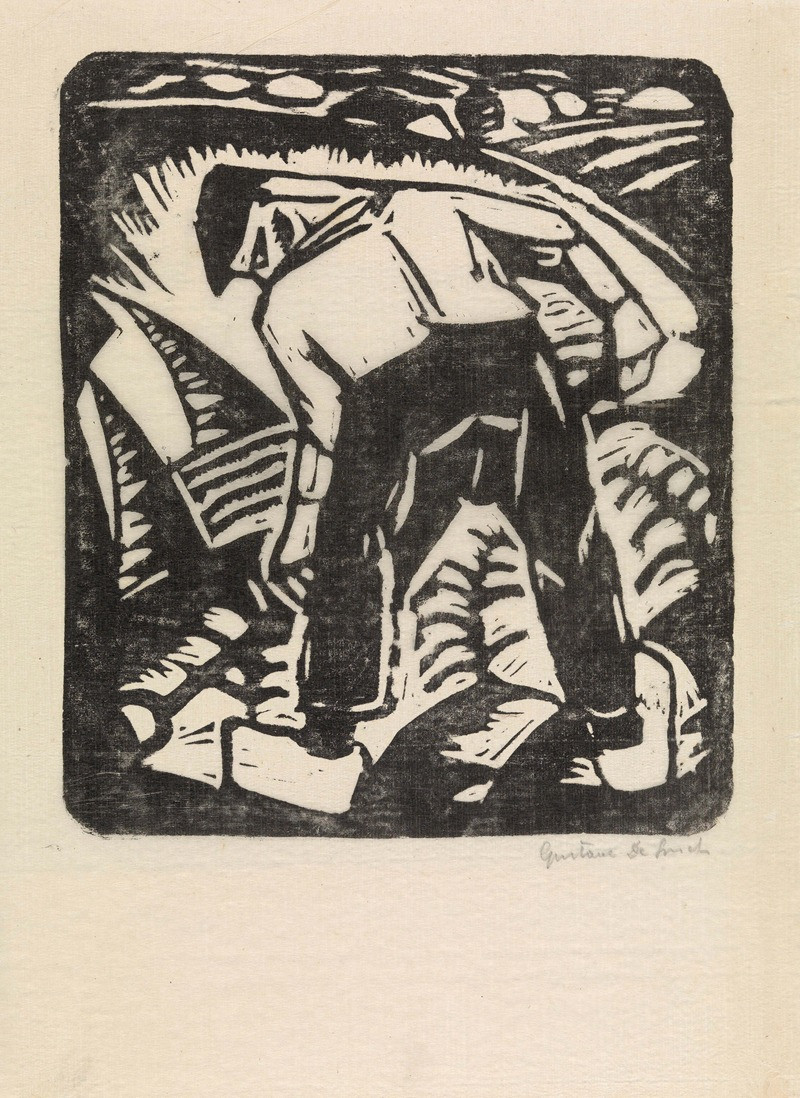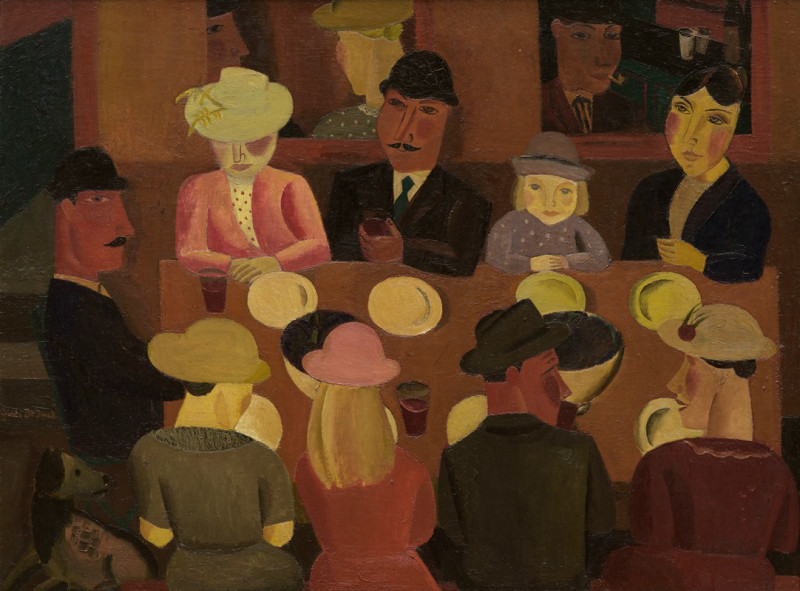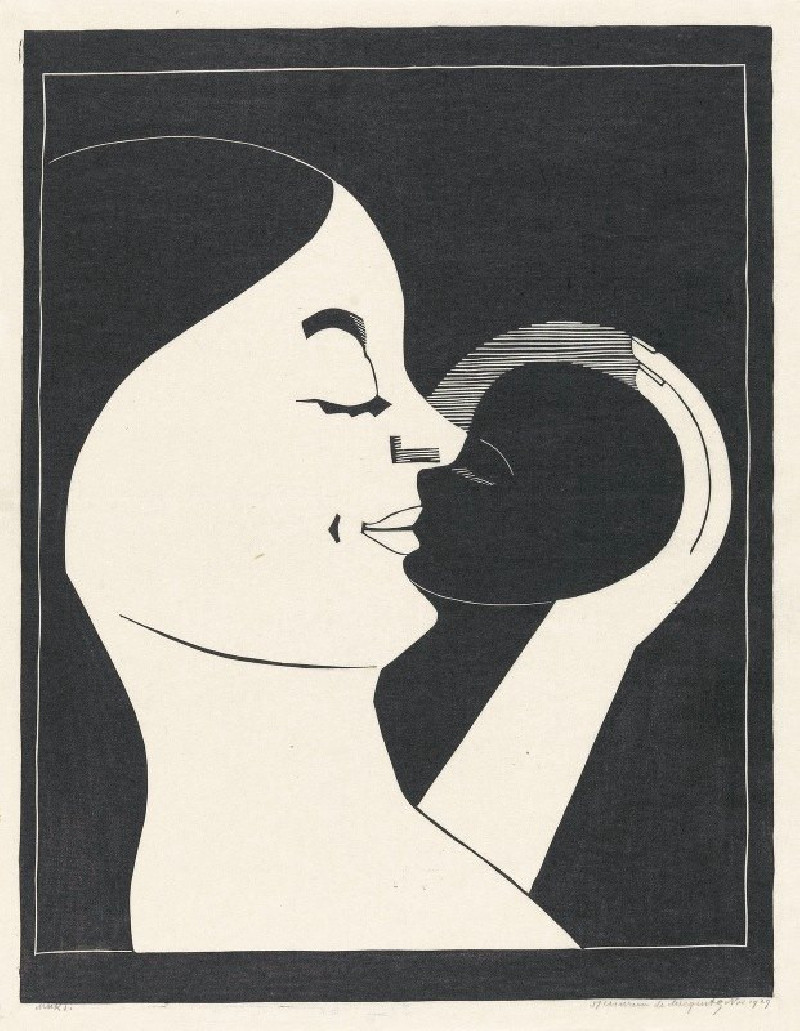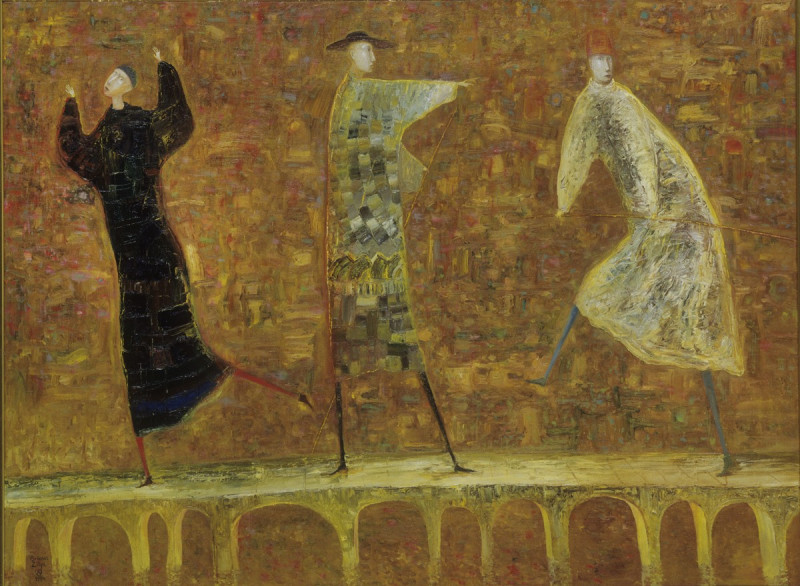Dorpskermis (1930)
Technique: Giclée quality print
Recommended by our customers
More about this artwork
Delve into the vibrant village life of Belgium through Gustave De Smet’s expressive painting “Dorpskermis” (Village Fair), crafted in 1930. This captivating artwork beautifully encapsulates a festive atmosphere within a small town, portrayed in De Smet's signature style that merges elements of realism and abstraction, characteristic of the Flemish Expressionist movement.The painting introduces us to a bustling scene set against a backdrop of quaint village homes and a towering church spire that punctuates the skyline. The earthy tones and muted hues of the buildings provide a stark contrast to the dynamic human activity at the forefront. De Smet masterfully captures a variety of village folk, each character uniquely rendered with exaggerated facial features and distinct expressions, suggesting a storyline or personality beyond the canvas frame.Central to the composition are the villagers, depicted in varying stances of interaction and celebration. Men and women, young and old, gather in groups or stride solo through the village square, likely sharing news, laughter, and the joy of the day's fair. The presence of flags and apparent stalls hints at the temporary transformation of the village into a space of communal merriment."Dorpskermis" is not merely an artwork; it's a historic portal to the early 20th-century Flemish life, inviting viewers to ponder the simplicity and complexity of rural festivities.














































